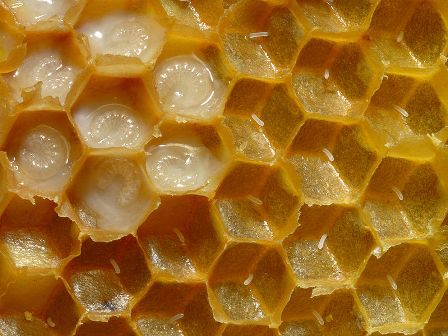- Series:Animals, Transcript English
Proverbs 8:12a, 22, 30-31a
“I wisdom dwell with prudence…The Lord possessed me in the beginning of His way, before his works of old…Then I was by him, as one brought up with him: and I was daily his delight, rejoicing always before him; rejoicing in the habitable part of his earth…”
The amazing structure of the honeycomb has fascinated scientists for thousands of years. In the third century, the astronomer and geometer, Pappus of Alexandria, became the first to offer an explanation for why the honeycomb has a hexagonal shape.
 Pappus explained that only three shapes could serve as candidates for a honeycomb cell – the triangle, the square and the hexagon. Any other shape would leave wasteful open spaces between each cell. Pappus noted that the hexagon holds more honey in the same space than either a square or a triangle. It also takes less wax to build, and the shared sides of the hexagonal cells cut wax usage even further.
Pappus explained that only three shapes could serve as candidates for a honeycomb cell – the triangle, the square and the hexagon. Any other shape would leave wasteful open spaces between each cell. Pappus noted that the hexagon holds more honey in the same space than either a square or a triangle. It also takes less wax to build, and the shared sides of the hexagonal cells cut wax usage even further.
But it was not until the development of modern calculus that scientists could fully appreciate the shape of the caps at the end of the honeycomb cells. Each cell is capped with a pyramid composed of three rhombuses. Complex mathematics shows that this shape, too, requires the least amount of wax for construction and that it allows honeycomb cells to be butted up against each other without wasting space.
Modern scientists who accept evolution talk about the design of the honeycomb as a great accomplishment by bees. But the more sensible conclusion is obvious. The twelve-sided prism, that is, six sides plus two ends of the honeycomb, is magnificent testimony to the mathematical wisdom of the Creator Himself!
Prayer:
Lord Jesus, I give thanks that I know You, the greatest of all wisdom, to be my Lord and Savior. Teach me and use me so that those who are wise in the things of this world may be directed to true wisdom in Your saving work. Amen.
Notes:
Photo: Honeycomb with eggs and larvae. Courtesy of Waugsberg. Licensed under the GNU Free Documentation License, Version 1.2.
